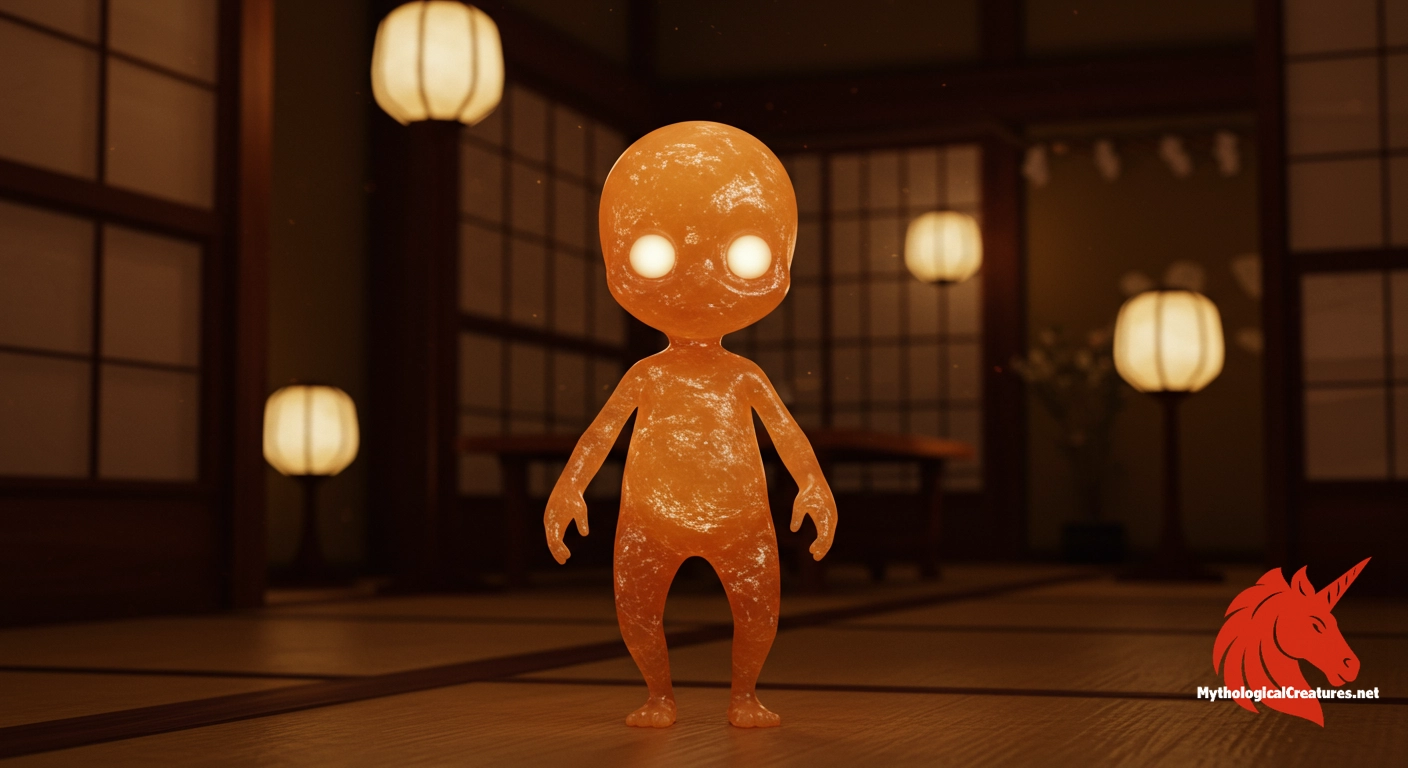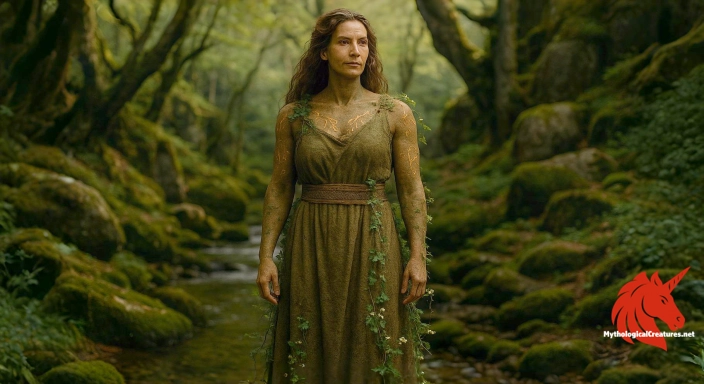Abura-akago: Abura-akago is a Japanese yōkai that manifests as both a flame and an infant ghost.

Abura-akago
Abura-akago - Embodies the interplay between economic practices and supernatural phenomena in Edo period Japan, serving as a moral and practical warning against wasting valuable resources
Origins & First Encounters
Abura-akago is a distinctive Japanese spectral entity that takes the form of an infant with an unusual obsession for oil. Its origins trace back to mid-Edo period imagery and literary invention, where it emerged in a fascinating fusion of innocence and eerie supernaturalism. First attested in the art of Toriyama Sekien, this yōkai is imbued with symbolic connections to the utilitarian and sacred values of oil in traditional Japanese society. The spirit’s appellation, meaning ‘oil baby’, underscores its unconventional habit of lapping oil from illuminated andon lamps. It occupies a liminal space between the playful and the unsettling, capturing the imagination of those who explore Japan’s diverse folklore. Cultural context in Edo period Japan, where oil was both a precious resource and an essential commodity, enriched its narrative with subtle moral overtones. Its myth is steeped in the naturalistic observation of everyday life, yet it transcends ordinary existence by being entwined with supernatural retribution. The Abura-akago thus stands as a compelling reminder of how the mundane and the mystical can merge in folklore. Its legacy continues to invite modern reinterpretations while preserving the enigmatic qualities that first captivated its early audience.
Source Texts & Tale Variants
The primary sources documenting Abura-akago span a range of Edo period texts and artistic compilations. Its initial appearance in Toriyama Sekien’s Konjaku Gazu Zoku Hyakki set the stage for subsequent literary elaborations. Numerous records in texts such as the Shokoku Rijin Dan and the Honchō Koji Innen Shū further expanded the narrative, blending observational folklore with imaginative invention. There exists a variant tale presented in Ihara Saikaku’s early ukiyo-e literature which recounts a similar account of an oil-consuming infant spirit. In some regional manuscripts, notably those compiled in Tōhoku Kaidan no Tabi, the creature is referred to as the abura-name akago, highlighting its recurring presence in local ghost stories. These diverse narratives reinforce the idea that the Abura-akago is a composite figure, whose features are derived partly from established belief and partly from artistic creativity. Folklore surrounding mysterious oil-stealing fires, such as the abura-nusumi no hi, has also been absorbed into its legend. The variations in the textual accounts illustrate the fluidity of yōkai myth-making in historical Japan. As a result, the Abura-akago remains an inherently layered figure whose origins continue to provoke thoughtful enquiry among enthusiasts of Japanese folklore.
Form & Powers
The Abura-akago is visually captivating, often depicted as a tiny, ghostly infant whose form blurs the line between human and ephemeral flame. Its appearance is marked by a pale, almost luminescent complexion that seems to shimmer under the glow of oil lamps. The creature’s delicate features, including large, expressive eyes and a subtly contoured visage, evoke both a sense of vulnerability and an uncanny hint of the supernatural. In many portrayals, the spirit is seen engaging in the unnerving act of lapping oil from an andon, with its form sometimes merging imperceptibly with the flickering light of the flame. There are interpretations where the Abura-akago’s form appears to shift fluidly between a corporeal infant and a ball of radiant fire, emphasising its transient nature. The stark contrast between its human-like form and the elemental energy it embodies creates an atmosphere of both innocence and disquiet. Some depictions suggest that its body is composed of a vaporous substance that can dissipate or coalesce at will, further heightening its mysterious allure. This duality of appearance resonates with the broader aesthetic of yōkai art, where figures are often imbued with ambiguities that challenge conventional forms. The overall visual impact of the Abura-akago continues to inspire creative renditions in both traditional and modern artistic expressions.
Regional Faces
Regional interpretations of the Abura-akago display a fascinating array of variations that mirror local cultural idiosyncrasies. In the village of Shiga, for instance, the spirit is intertwined with the eerie tale of an oil merchant whose misdeeds led to his transformation into a flame, eventually reincarnating in the guise of a baby. In the regions of Hacchō and Ōtsu in Ōmi Province, local lore recounts sightings of a flying, fireball-like entity whose behaviour closely aligns with that of the Abura-akago. Legends in the Mount Hiei area also feature luminous, wandering fires that are often identified with this spectral infant, suggesting that geographical factors have influenced its portrayal. Some communities, particularly in the Tōhoku region, refer to a similar figure as the abura-name akago, highlighting its role as a local symbol linked to oil and resource mismanagement. These regional narratives frequently incorporate moral lessons that caution against the wasteful use of valuable commodities. The physical characteristics of the spirit, such as its ability to shift between flame and infant form, are emphasised differently depending on the locality. Over time, these diverse regional accounts have intermingled, creating a rich tapestry of myth that belies a singular origin. The variations across regions not only underscore the adaptability of yōkai legends but also reflect the unique historical and cultural circumstances of each community.
Cultural Parallels
Within the broader spectrum of yōkai mythology, the Abura-akago shares intriguing parallels with several other oil-related spirits. Its elemental connection to oil ties it to similar figures like the abura-nase and the ubagabi, both of which serve as metaphorical warnings about the misappropriation of essential resources. These comparative entities encapsulate the delicate balance between human need and the potential for supernatural retribution, a theme common in many traditional Japanese tales. The juxtaposition of a seemingly innocent infant with the consuming nature of oil serves to amplify its mythological impact. Such dualities are also found in legends from other cultural contexts, where spectral infants or fire sprites manifest as allegories for broader societal anxieties. The cross-cultural comparisons, though not numerous, highlight a universal fascination with the interplay between scarcity, resource management, and the supernatural. In both Japanese and Western traditions, similar motifs appear where youthful forms become symbolic vessels for regret, warning, or transformation. The symbolic resonance of Abura-akago is further deepened by its visual and behavioural similarities to other ephemeral beings that challenge the boundaries of life and natural order. Thus, the creature stands as a compelling example of how folklore can adapt and resonate across diverse cultural landscapes.
Legacy & Modern Evolution
The historical trajectory of Abura-akago reveals an evolution from obscure folklore to a symbol of both cultural critique and artistic ingenuity. Its initial conceptualisation by Toriyama Sekien provided a fertile ground for later reinterpretations that have traversed the boundaries of art, literature, and popular culture. In the centuries since its first attestation, the spirit’s compelling narrative has been reshaped to reflect changing societal attitudes towards resource conservation and the unintended consequences of human enterprise. Modern retellings in literature, film, and manga often position the Abura-akago as a metaphor for lost innocence and the unforeseen outcomes of economic ambition. Contemporary representations sometimes emphasise the creature’s dual nature as both an endearing childlike figure and a forewarning of environmental imprudence. This enduring legacy has ensured that the Abura-akago remains a subject of fascination, with artists and storytellers reimagining its myth to address modern themes. Its transformation from an idiosyncratic Edo period figure to a modern cultural icon illustrates the dynamic interplay between traditional folklore and contemporary sensibilities. The creature continues to be a focal point in discussions of resource symbolism and the cultural history of Japan. In this way, the Abura-akago not only reflects its historical origins but also adapts to convey enduring lessons in an ever-changing world.
Interesting Fact
An intriguing aspect of Abura-akago is its dual existence as both a harmless infant spirit and a manifestation of a vengeful, misguided soul, embodying the complex moral lessons of its era.
Quick Creature Info
Features:
Associations:
Our Mythic Legendary Rating:

Also Sometimes Known As:
Habitat:
Supernatural Powers:
Physical Attributes:
Abilities:
Behavior:
Weaknesses:
Lore:
Related Creatures, Tales or Lore
- AAbura-nusumi
- AAbura-nase
- UUbagabi
References
Discover Another Mythical Legend You May Not Have Heard Of?
Uncover the mysteries of ancient folklore and expand your knowledge of legendary beings from cultures around the world.
Dare to Meet the Jörð....
Mythical Disclaimer: The images and data on this site are derived from various historical and literary sources, but we have found that many myths often have multiple versions and interpretations across references, sometimes contradictory. As a result, these creature depictions are artistic interpretations—imaginative blends of folklore, legend, and a dash of AI guesswork. Because creature descriptions vary widely, our illustrations and accompanying information represent our best effort to honor mythology while bridging creative gaps. Enjoy these interpretations—just remember, we've done our best to respect the stories and validate available data, but in the realm of mythology, details often shift, imagination leads the way, and nothing is ever set in stone!
Curated by the Mythological Creatures Team (rev. May 2025)
